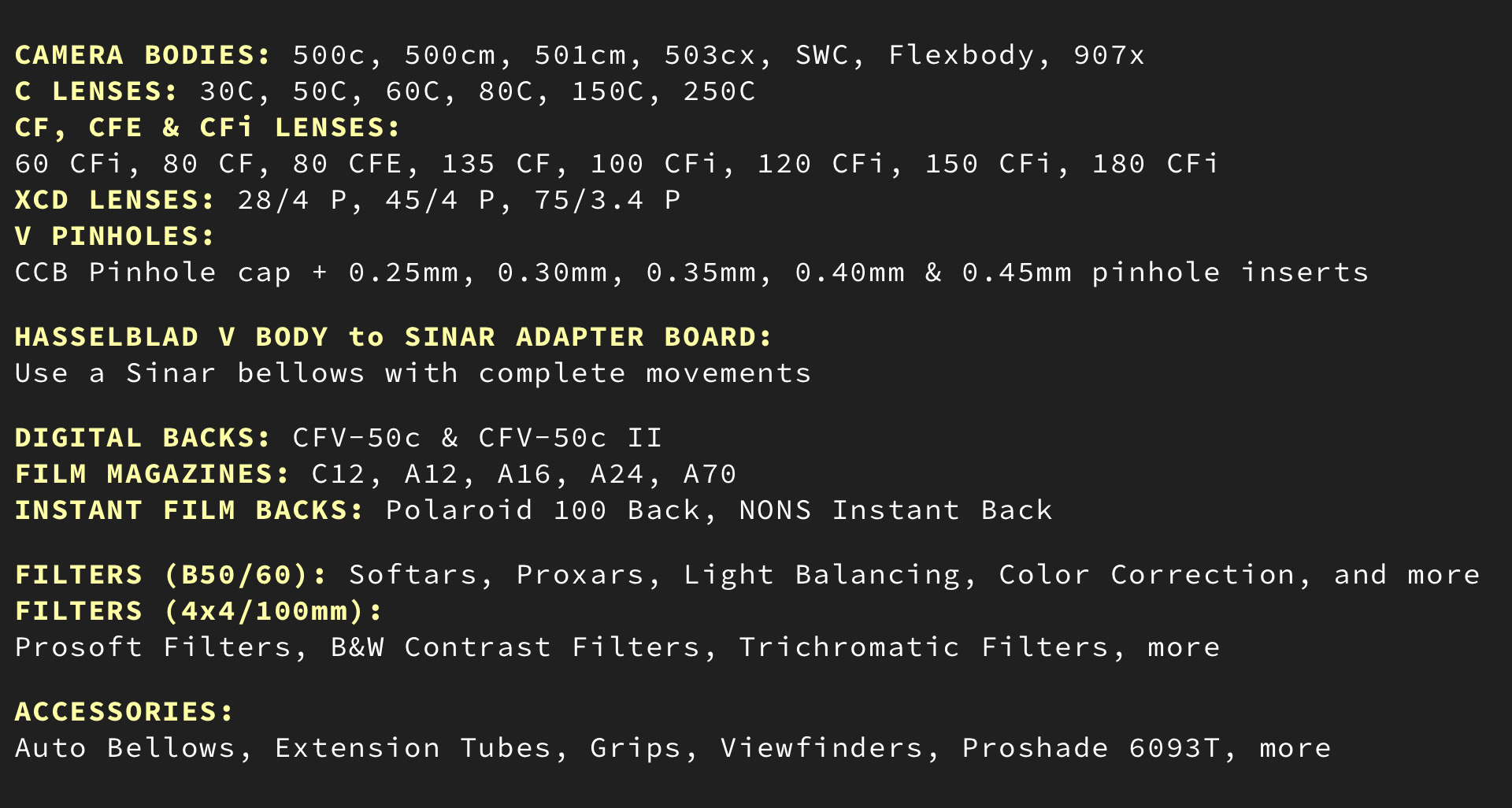HASSELBLAD CAMERAS: 500C, 500CM, 501CM, 503CX, SWC, FLEXBODY & 907X
I have found no other medium-format camera system as complete or as durable as Hasselblad. Much of my career was spent working on location, where equipment was constantly packed, transported, rebuilt, and used under real-world conditions. Through decades of commercial use, Hasselblad proved itself in ways many other systems did not.
Over the years, I tested several other medium-format camera systems, but issues such as plastic housings, weak lens mounts, or fragile electronic builds quickly revealed their limitations. This page documents my continued use of Hasselblad cameras—both film and digital—and the core equipment I rely on for my projects.
Below you’ll find direct access to film cameras, digital cameras, lenses, and accessories, organized as a working reference.
Table of Contents
Each section opens a dedicated reference page.
Hasselblad Film Cameras
Hasselblad Digital Cameras
Hasselblad Digital Backs
Hasselblad Lenses
Hasselblad Macro & Auto Bellows
Hasselblad Accessories
LITERATURE AVAILABLE
HASSELBLAD: Hasselblad Product Catalogs, ProShade 6093T
CAMERA MANUALS: 501cm, 503cx, 907x 50c, ArcBody, FlexBody
‘V’ LENS DATA SHEETS: 60 CFi, 80 CFE, 100 CFi, 120 CFi, 135 CF, 180 CFi
XCD LENS DATA SHEETS: 28P, 45P, 75P
The Pacific Rim Camera Reference Library contains an extensive collection of historical Hasselblad catalogs and technical documentation covering many decades of photographic equipment.
DATING HASSELBLAD GEAR
For those interested in dating Hasselblad equipment, the first two letters of any Hasselblad serial number (bodies, film magazines, and accessories) indicate the year of manufacture. For Hasselblad Zeiss lenses, please refer to the Zeiss dating chart linked here.
| V | H | P | I | C | T | U | R | E | S |
| 1 | 2 | 3 | 4 | 5 | 6 | 7 | 8 | 9 | 0 |
THE HASSELBLAD MODULAR SYSTEM
Hasselblad cameras are fully modular. Each system begins with a camera body and expands through interchangeable lenses, viewfinders, film magazines, digital backs, and accessories. These components are interchangeable across bodies, allowing photographers to configure the system to suit nearly any type of work.
In my own workflow, I frequently combine Hasselblad lenses, viewfinders, and digital backs with ALPA technical cameras. Because ALPA does not offer comparable modular components in the same way Hasselblad does, this pairing has proven both seamless and highly flexible.
What continues to distinguish Hasselblad is its long-term reliability, mechanical consistency, and adaptability across decades of photographic practice. Few medium-format systems have demonstrated this level of longevity.


